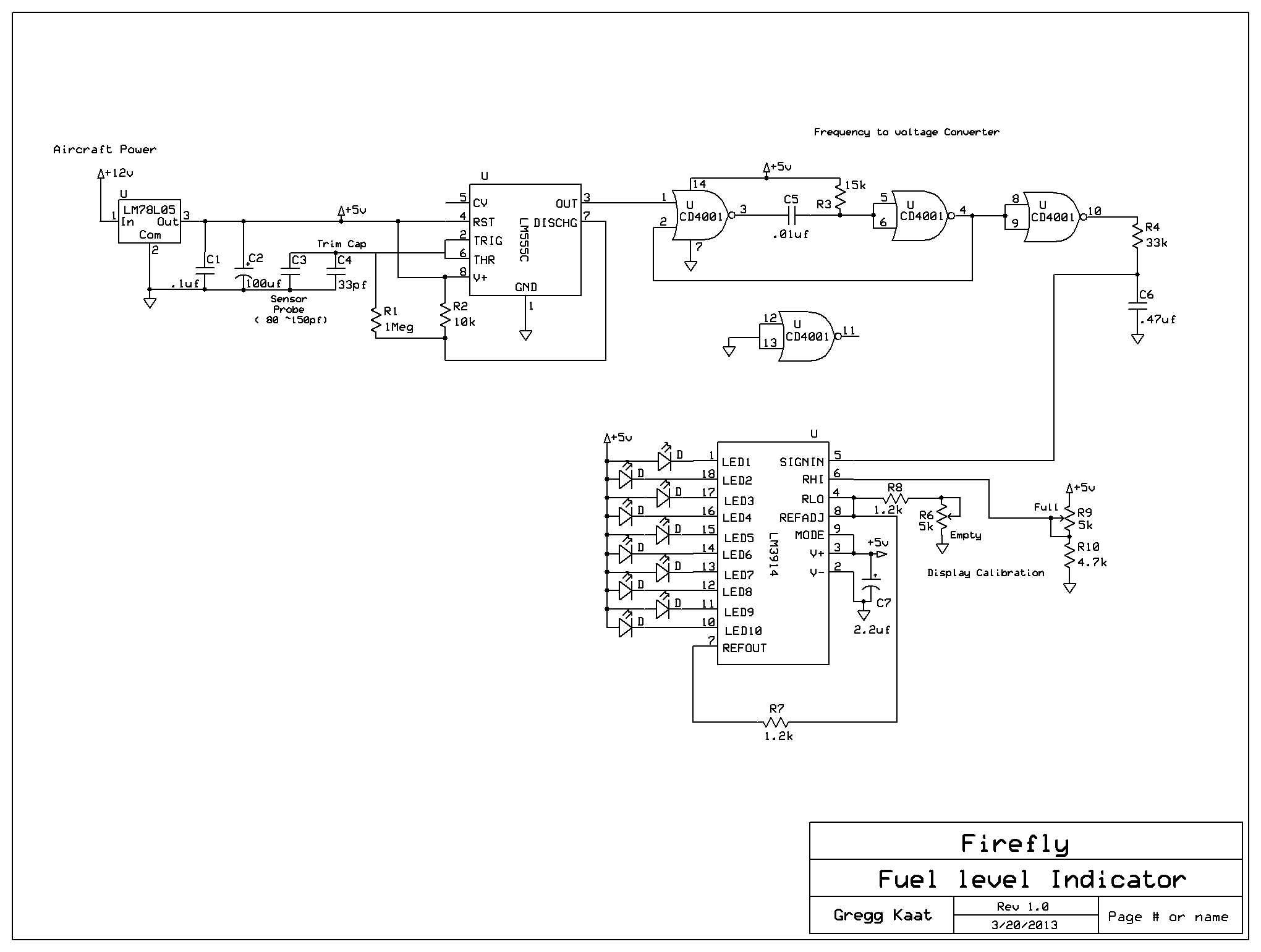

|
| This is an old school circuit that provides the fuel level indication on an led bar graph. This
circuit looks at a capacitive type probe. I made my own probe using a
couple of lengths of tubing, one inside the other and some diy bushings
I fashioned from some nylon plastic. Refer to my Arduino fuel gauge You
Tube video for a look at that. A 555 timer is set up as an oscillator. C3 represents the probe in this circuit. The fuel within the probe provides the dielectric for the capacitance. As the fuel level changes within the probe, the capacitance changes. The values are small, in the picofarad range. The frequency of the 555 oscillator is dependent on the capacitance of C3. This variable frequency is fed to a frequency to voltage converter. There are various ways found on the net to do this, either by purpose built IC's or complex circuitry but this one using some cheap NOR logic gates is by far the simplest and works just fine. The variable voltage is fed to the input of a standard LM3914 bar graph driver IC. This IC can only source about 10ma per segment so choose a standard bar graph package or make your own out of leds. You should bread board this circuit first and make sure you don't need a series resistor between your display and the IC to keep your current 10ma or less. Back to the theory. The voltage swing from the frequency to voltage converter from full to empty is only a couple of volts or less. The full to empty range is calibrated with the R6 and R9 pots. They can interact with each other so you have to go back and forth a few times to get it right. That's why I made the pots accessable on the plane if I wanted to recal. The circuit and probe should be kept as close as possible to reduce stray capacitance. I used shielded wire between the probe and circuit as well. The C4 trim cap can be changed to compensate for stray capacitance as necessary. There may be a shot of my install in my You Tube Firefly Walkaround video. I have used this display for a couple of years now but it is hard to make out in sunshine. I have since developed a digital version that uses a larger, higher current, brighter display. It is built but not yet installed. It can be found Here. Home Page |